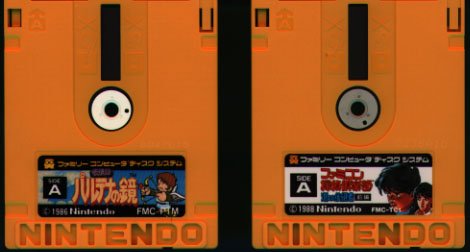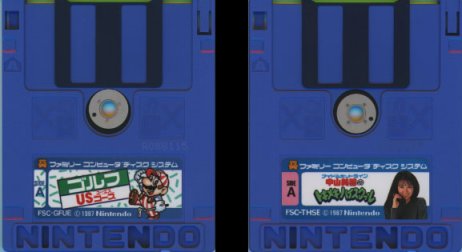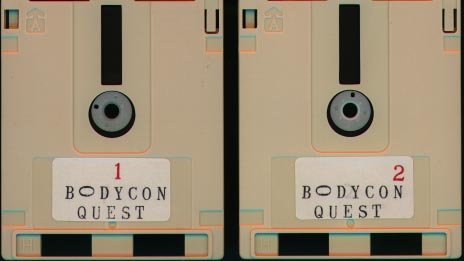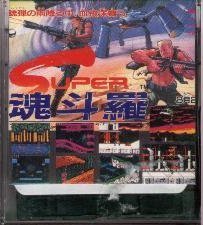 Disk System disks (referred to by Nintendo as "disk cards") are about 3 inches by 4 inches, making them different from nearly every other disk in existence. They are more or less the same as a format called "Quick Disk", invented by Mitsumi and used in one or two computers and MIDI keyboards. The disks are a little longer, though, so you can't use regular Quick Disks on the FDS (several hardware add-ons were made by unlicensed companies that let you copy games onto Quick Disks, though). These yellow disks were the standard cards used for reading in new games and packaging games with manuals in plastic cases. Nintendo decided to not spring for a disk-protecting shutter so the magnetic disk film lies out in the open, inviting dust and insects to settle on it and destroy its data. To prevent this, all disks come in a protective wax-paper casing which you're supposed to keep the disk cards in at all times. All Disk System cards can be write-protected by tearing off the plastic nubs on the top corners. This is useful when you have high scores or saved games that you don't want your kid brother screwing around with, or when you're sure you want to keep this game and not read in another game on it.
 Five games from Nintendo were sold in these special blue disk cards. These were the five games that had high-scoring contests behind them, and these cards were designed to be inserted into the Disk Fax machines that sent these scores to Nintendo for registration. Unlike yellow disks, these cards have protective shutters; that's the only real difference between them. Why Nintendo decided not to put shutters on all disks is anybody's guess; I'm sure that more than a few kids had their 500 yen go down the toilet when dust or dirt ruined their unprotected disks.
 Here are the two disks from BodyCon Quest, a porno game from Hacker. The company mostly copied Nintendo's plastic casing, but produced their games on black and/or brownish white disks. As you can guess from the labels, Hacker International was a pretty low-budget operation throughout most of its existence.
  Here are two examples of pirate disk cards from Hong Kong or elsewhere in Southeast Asia. These games are originally cartridge Famicom titles, but have been illegally ported to the Disk System for use in pirate system users in HK, Taiwan, and parts thereabout. The labels are usually taken from the pirated game's cartridge art, with random screenshots interspersed. The disks themselves come in a great variety of colors, but most are black. Instead of "NINTENDO" imprinted on the disks, some have amusing misspellings meant to differentiate them from the real thing. Disks from such illustrious companies as "NINFEMDO" and "OINTENDO" have been discovered. Back...
|